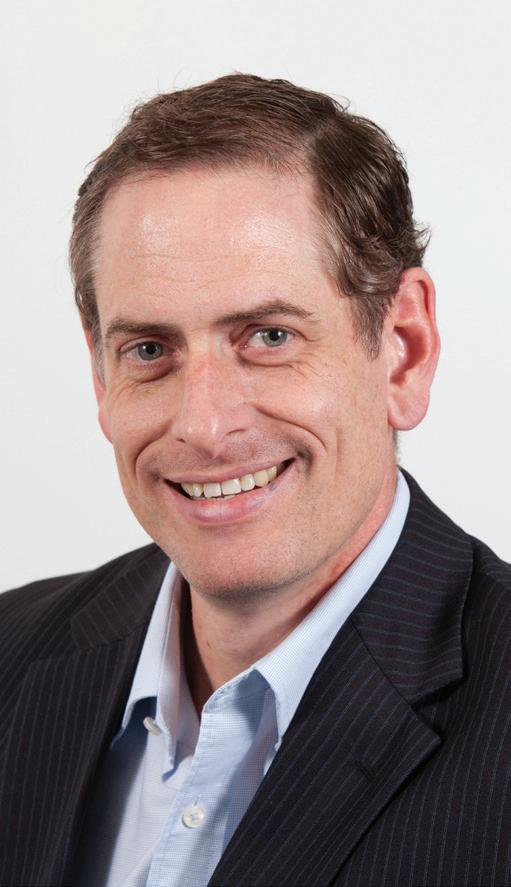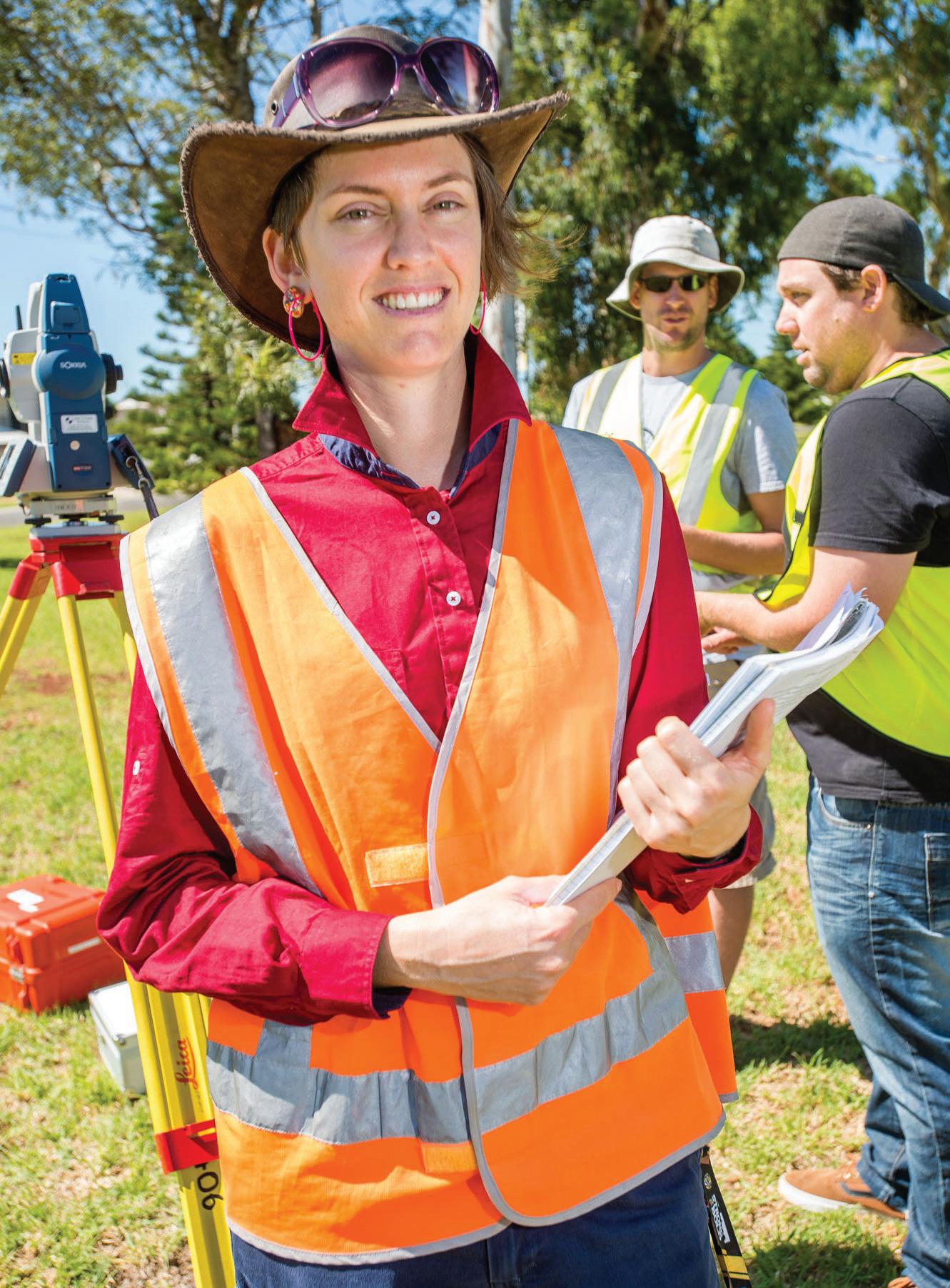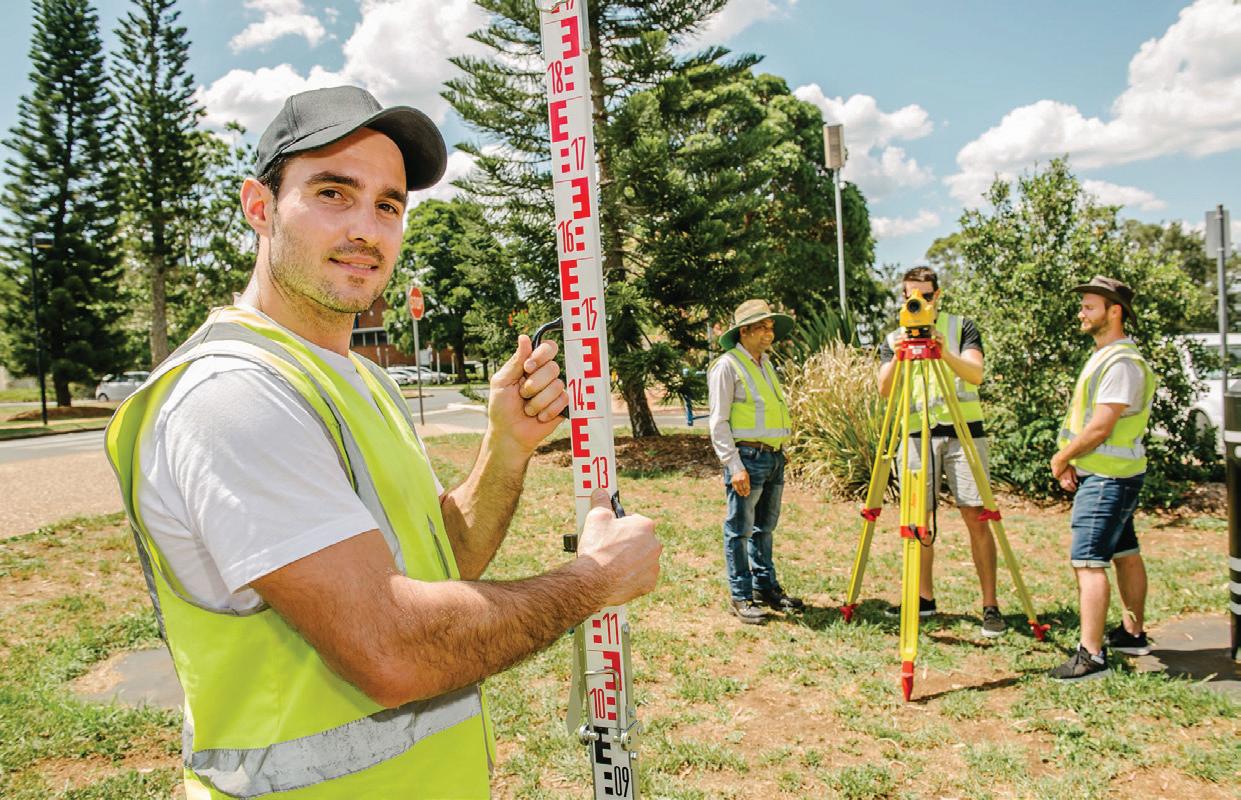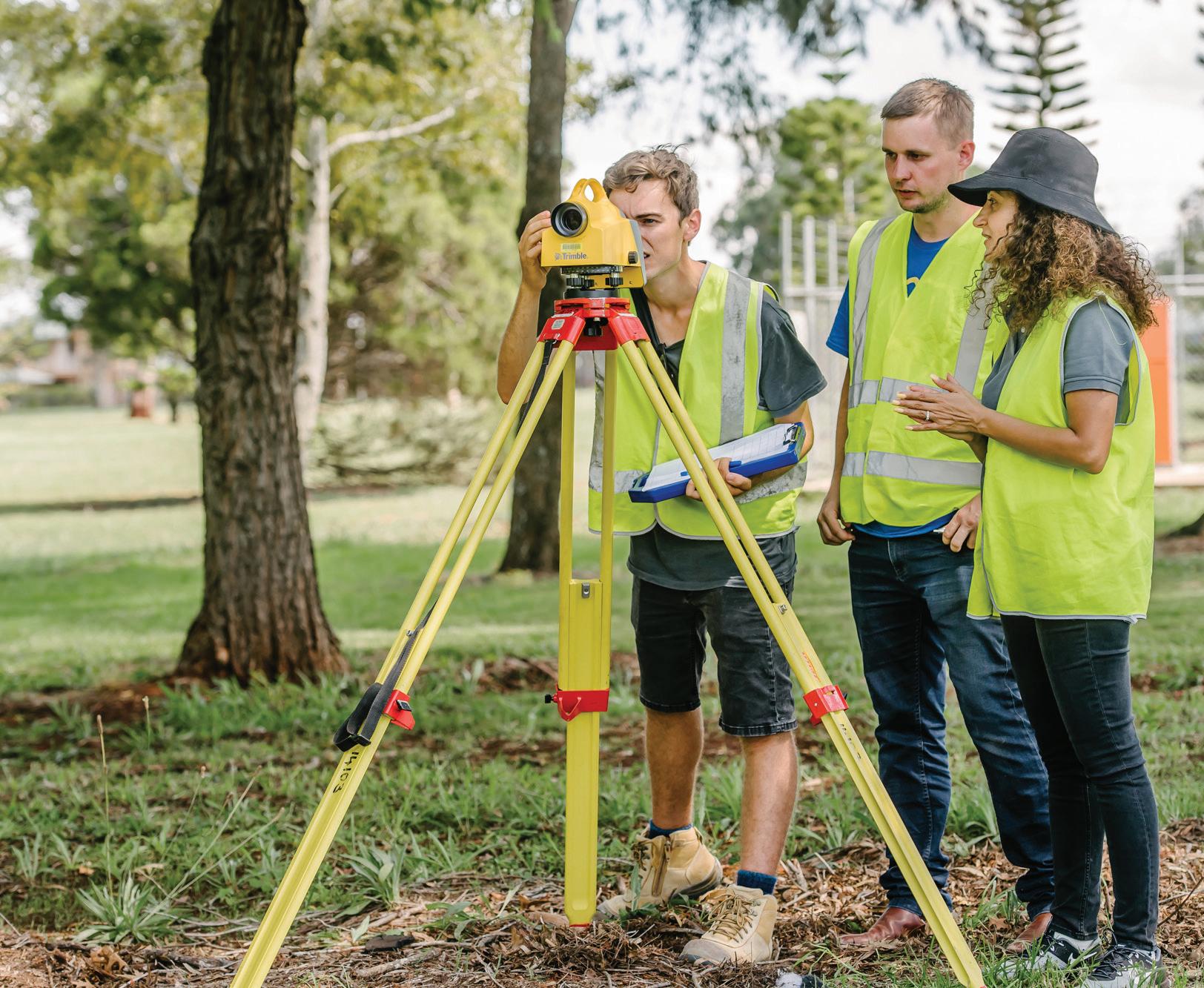
3 minute read
Building the future – supporting our surveying cohort
The eyes of the world will be on South East Queensland in the lead up to the 2032 Olympic and Paralympic Games, and UniSQ expertise will ensure that the resulting infrastructure boom is built on solid foundations.
The University of Southern Queensland is home to the nation’s largest surveying program, with approximately 750 students currently enrolled across three different degrees.
Advertisement
“Surveying is used in every single infrastructure construction development process that we go through within Australia,” explains Simon White, CEO of The Surveyors’ Trust.
“If somebody is building a new development – whether it’s industrial, commercial, residential, or government – then without surveying there’s no understanding of where it actually sits in the world or where it sits within that the city and within the precinct, within the suburb, and so on and so forth.”
Surveying is an exact and ancient science. For thousands of years, cities have needed accurate records of what’s known as the “cadastre” – the precise locations and dimensions of a parcel of land in relation to the areas around it – in order to regulate land ownership, valuation, and taxation. Borrowed from Ancient Greek, the word means “(organised) line by line”.
There are remnants of stone cadastral maps ordered by the Roman Emperors, who were keen to enforce the boundaries of their state-controlled lands.
While the core purpose of the surveying discipline remains, the technology involved in its execution is becoming more sophisticated by the day.
Professor Sherif Mohamed is the Head of School and Dean (Surveying and Built Environment). He explains that the University established its first surveying programs in 1978 and has continued to invest and refine the degree offerings ever since.
One of the defining features of UniSQ’s surveying programs is the incorporation of residential schools. These annual, intensive study blocks bring all surveying students on campus periodically to closely collaborate with each other, their lecturers, and industry representatives. Classes are conducted online for the rest of the year, allowing students to juggle their studies with work commitments.
Simon White CEO, The Surveyors’ Trust

Close industry connections are essential for an applied discipline such as surveying. The Surveyors’ Trust – which manages the copyright royalties generated by Australian cadastral plans – generously re-invests these funds to support research projects and the next generation of surveying professionals. In 2022, 70 UniSQ surveying students benefitted from bursaries funded by The Surveyors’ Trust to improve their residential school experiences. Since its establishment, more than 120 students have received a residential bursary.
The partnership between the two organisations is timely, given an ageing surveying workforce that is struggling to keep up with the demands of rapid development.
The path to becoming a fully accredited surveyor can take the better part of a decade.

“South East Queensland is a fast-growing region. I believe that there’s over $20 billion worth of infrastructure that is either proposed or under construction,” Professor Mohamed says.
“In order to meet this demand, there must be a supply of surveying and built environment professionals who can actually translate all these demands into reality.”
Another dimension is the complexity of copyright. Mr White cites a recent landmark case within the Federal Court of Australia, which explored whether artificial intelligence (AI) could be considered an inventor for the purposes of a patent. (The full court concluded that it could not).
“There’s some issues there around how long we can expect to own copyright on various things, especially as AI might start to rewrite boundaries and do other things based on geospatial technology getting better and satellite technology and drones and those sorts of things that are now being utilised to map the cadastre,” Mr White says.
The Surveyors’ Trust is currently funding UniSQ research that explores the implications of digital disruption to the traditional concepts of copyright.
True to its position as a leader in surveying education, UniSQ is also developing a new postgraduate program to complement the existing two-year (Associate), three-year (Bachelor), and four-year (Honours) offerings.

“We plan to introduce the new Master of Geoinformatics in 2024,” Professor Mohamed says.
“This program will help students to manage and integrate the data from numerous sources such as scanners and sensors, and in real time create the most accurate view of the environment. And then use that data to make more informed planning decisions.”

Professor Mohamed says that the opportunities and challenges facing the sector require teamwork to be fully understood.
“We take industry partnerships really seriously in our program, because ultimately we receive input from industry and will produce our own graduates who can work with and for the industry.”
“This is a two-way relationship where industry partners get invited to speak to our students about opportunities, nominate research projects that the students can work on, and develop this relationship where both parties have a common goal.”










